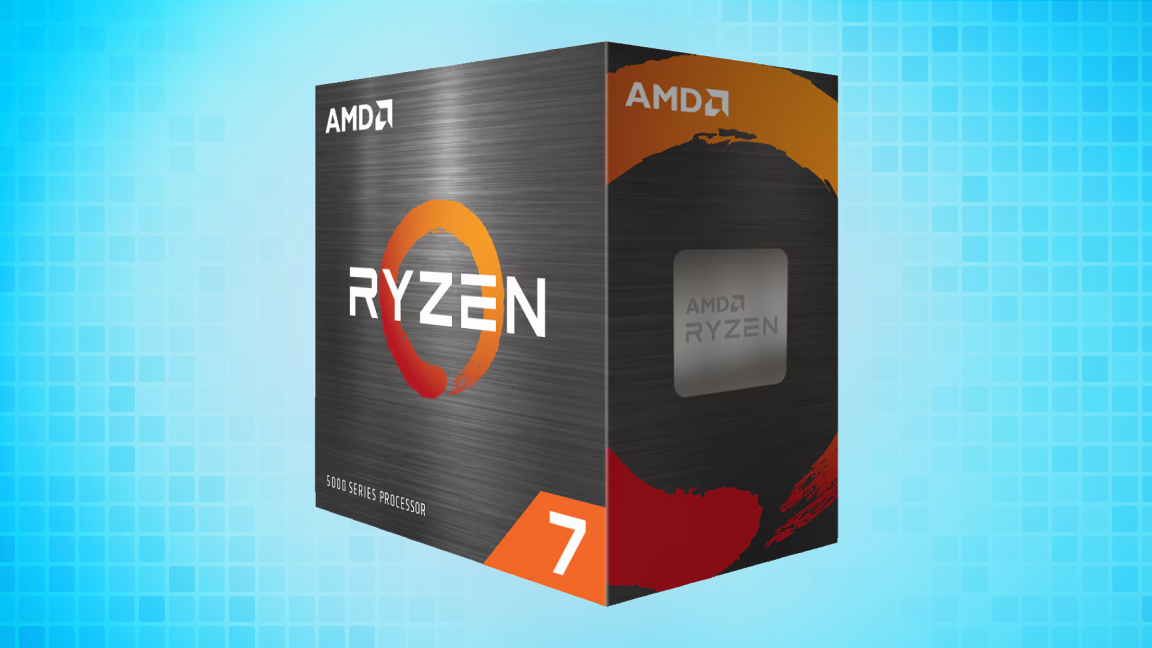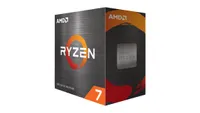You can grab a AMD eight-core Zen 3 CPU for as low as $129

Today, the AMD Ryzen 7 5800XT CPU is available at Amazon for one of its lowest prices ever—at least according to data from Camel Camel Camel. It debuted last year with a recommended price of around $249, but right now, it's discounted to just $129. This might not be one of the newest processors on the market, but the deal was too notable to pass up.
If you want a better idea of how this processor compares to others on the market, check out our list of the best CPUs to see which ones are our favorites. We also have a CPU hierarchy list that compares benchmarking data if you want to examine each processor's specs.
AMD Ryzen 7 5800XT: now $129 at Amazon (was $249)
The AMD Ryzen 7 5800XT has eight cores for 16 threads. It can reach speeds as high as 4.8 GHz and has PCIe 4.0 support. This is the lowest price we've seen for the processor since it was first released last year.
The AMD Ryzen 7 5800XT features Zen 3 architecture with eight cores for 16 threads. Its base speed is 3.8 GHz, but with Max Boost enabled, it can reach as high as 4.8 GHz. According to AMD, this particular edition supports PCIe 4.0.
Regarding memory, you can install up to 128GB of DDR4-3200 via two memory channels. It has no integrated graphics, so you need an external GPU to get off the ground. This is a pretty good deal for a processor with these specs, even if it isn't the fastest or newest on the market. As of this writing, we're unsure how long the offer will be available.
Visit Amazon's AMD Ryzen 7 5800XT product page for more details and purchase options.
Get Tom's Hardware's best news and in-depth reviews, straight to your inbox.

Ash Hill is a contributing writer for Tom's Hardware with a wealth of experience in the hobby electronics, 3D printing and PCs. She manages the Pi projects of the month and much of our daily Raspberry Pi reporting while also finding the best coupons and deals on all tech.
-
rluker5 Faster 12600kf is $143 and slower 12490f is $110 on Newegg right now. But both are in the same performance class.Reply -
Shiznizzle Reply
IF you are looking at getting the AMD chip in this article then it is not likely you are even considering an Intel chip.rluker5 said:Faster 12600kf is $143 and slower 12490f is $110 on Newegg right now. But both are in the same performance class.
A vegetarian looks at the menu of a restaurant and gets bothered by a guy from across the street who has a steakhouse and is offering a steak. -
rluker5 Reply
Of course somebody that already has an AM4 motherboard should get an AM4 chip, but most people are brand agnostic and getting new, so the comparison would be closer to going to the Thai place on one side of the street or the Hmong place on the other for them. Also for most the 12490 would give them a smoother, quieter and more luxurious experience for less money.Shiznizzle said:IF you are looking at getting the AMD chip in this article then it is not likely you are even considering an Intel chip.
A vegetarian looks at the menu of a restaurant and gets bothered by a guy from across the street who has a steakhouse and is offering a steak. -
Thunder64 Replyrluker5 said:Of course somebody that already has an AM4 motherboard should get an AM4 chip, but most people are brand agnostic and getting new, so the comparison would be closer to going to the Thai place on one side of the street or the Hmong place on the other for them. Also for most the 12490 would give them a smoother, quieter and more luxurious experience for less money.
You sure aren't. You push Intel every chance you get. Tell me, how many upgrades were worthwhile from Alder Lake? Compare that to AM4. Intel plays socket roulette. -
rluker5 Reply
That is nice how many CPUs AM4 went through, but maybe you are looking at it wrong.Thunder64 said:You sure aren't. You push Intel every chance you get. Tell me, how many upgrades were worthwhile from Alder Lake? Compare that to AM4. Intel plays socket roulette.
I went from a Z97 with a 2015 5775c: and 2400c10 DDR3 https://www.anandtech.com/show/16195/a-broadwell-retrospective-review-in-2020-is-edram-still-worth-it/25straight to a Z690 with a 12700k and DDR5.
The Ryzen 3000 series would have been a sidegrade, everything before a downgrade, the 5000 series a definite upgrade, but I would have been upset if I just bought a 5800XT to want to replace it the same year with a 5800X3D.
I did do that with replacing my 12700k with a 13900kf and it really didn't save me money. What saved me money is not needing to upgrade for 6 years and a few chipsets. That is where I am now. I have no desire to go for the Z890 chipset, or upgrade to a 14900k. With the way games are going with the increased raytracing and frame gen: https://cdn.mos.cms.futurecdn.net/RFuQXhiRHyiWtKtcYDUDw3-1200-80.png.webpit looks like my (run faster than this one) CPU will not need replacing until mid-late AM6. Saving me more money for GPUs. Although I could be tempted with something like 52 cores faster than mine just for hoarding reasons.
Isn't it better to not need an upgrade than to have more few hundred dollar ones available? -
Kindaian Intel plays core roulette as well. With a mix of "Perfomance" and "Economy" cores. So when you see a 12 core Intel chip, you need to check how many of those are performance ones, because the others are only good for low intensity tasks.Reply
If you are looking for a Gamers CPU, that is mostly irrelevant, but if you are looking to run VMs on those cores, then the "Economy" cores are quite underpowered.
Would be nice to see performance stats with VMs running on all cores and then sum the total, instead of trying to run the stats on just one main OS with all cores available.
Load an hipervisor, and create the number of VMs as the CPU has cores, and then the number of VMs as the CPU has threads. And then on both scenarios, run the performance test suit. That would for sure give a more accurate picture of the raw power available.
And as a bonus point, add the actual power consumption of the system under load before, during and after the tests are run (and create a chart to compare the power used vs the performance of each of the cores / threads).
This would also allow comparing distinct architectures like ARM which also have the notion of big / small cores.
